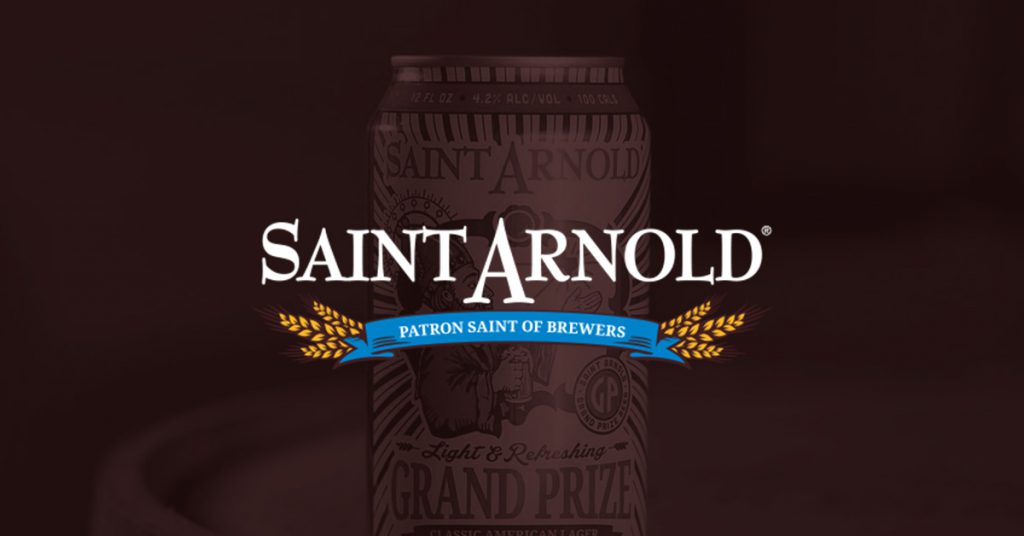
Next month, Saint Arnold Brewing Company, the oldest craft brewery in the state of Texas, will celebrate its 30th anniversary. It only took about half that time for it to become “an overnight success,” joked its founder Brock Wagner.
After working in investment banking for a few years post college, Wagner decided to turn his homebrewing hobby into a business.
“Craft breweries were starting to open around the country, and Houston – where I lived – was the largest city that didn’t have a microbrewery in it,” he told Brewbound. “I thought ‘this is going to be easy.’”
It was not. Turns out, “people in Houston and in Texas had no idea what craft beer was,” Wagner said. He spent the first decade of his business focused on education – anything from Saturday tours, to samplings and beer tastings that included other craft beers as well.
Texas laws were also among the most restrictive in the country, and it wasn’t until 2013 when a package of bills lobbied for by Wagner and other brewers brought sweeping reform, creating a modern framework for craft beer in the state.
Wagner now looks back at the fruits of his labor: More than 100 releases; a historic city building with a state-of-the-art brewery and neighboring 25,000-square-foot beer garden and restaurant; a staff of over 200; and 29 Great American Beer Festival medals and 14 World Beer Cup awards, more than any other brewery in the South.
Much of those accomplishments wouldn’t have been possible if he hadn’t stayed focused on his home market, Wagner said.
Focused On Community
Craft beer fans will need to go to Texas or Louisiana to sample Saint Arnold beers. Keeping distribution close to home is a strategy that Wagner argues has paid dividends for the company.
Saint Arnold distributed briefly in Florida and Colorado, but pulled back after realizing the amount of effort the company was spending on other states was better spent on “building community” in its home market.
“Now we continue to be relevant in every market that we’re in and continue to grow in all of the cities where we sell our beer,” Wagner said. “A lot of the breweries that have far-flung footprints, it helps them grow for a while, but then they’re very vulnerable.”
To build a strong consumer base at home, Wagner has focused on building a communal setting at the brewery with big tables that create environments for socializing. The company also has a long history of partnering with local nonprofits and community organizations, with Wagner adding that he “doesn’t say no” very often. His favorite event in the city is a local art and culture organization’s annual art car parade, where he was the grand marshall this year.
‘Quality Is A Death March’
As Saint Arnold became the decade-old veteran in a fast-evolving craft beer scene, the company faced challenges countering a reputation as a “stuffy old brewery.” Retailers constantly wanted new releases from new breweries. Saint Arnold hit back with the Icon series, seasonal offerings released three months at a time that would allow the sales team to dangle something sparkly at a new account, and hopefully parlay one of its IPAs or the Lawnmower Kölsch into the taplines.
The company has also looked beyond beer with hop water, soft drinks and hard cider. The brewery’s root beer, which was first released 25 years ago, has organically grown with zero marketing or sales investment. On the other hand, originally an experiment, the cider program has recently been reinvigorated and Wagner plans on continuing the brewery’s focus there.
However, in another 30 years, Wagner wants to be known as the leading craft brewer in Texas, despite its other offerings.
Inspiration comes from trips, from other beers, and especially from experimenting with hops.
“It’s like food, there’s no end to the different recipes that you can come up with,” he said.
The throughline is quality, the “death march” pushing his team to always ask, “How do we keep getting better?”

Employee Culture: Quality Over Structure
Quality extends to Wagner’s philosophy on employee culture too.
“We focus on hiring really good, smart people and then create as little structure as we possibly can so that people can really flourish, and we’re not limiting them,” he said.
In the first few years, promotions may have looked like ways to institutionalize responsibilities and leadership that people had already assumed. As the company has grown, roles are more defined, but Wagner says company culture still emphasizes collaboration across departments. The brewery’s Human Resources department has also worked to diversify its applicant pool.
“Nobody’s here because they check a box,” he said. “But naturally you see the change over time and I stress the importance of having managers and leaders here who aren’t just white males, because when somebody sees a person in a leadership role or in a place of responsibility who looks like them, they’re more likely to want to work there.”
One of the larger challenges has been unifying staff after it nearly doubled in size following the company’s restaurant and beer garden opening in 2018. Company-wide events help, and a policy that allows staff two drinks each after a shift, but they have to be consumed in the beer garden among their coworkers.
“Again, I think those kinds of shared experiences get back to that whole concept of building community,” he said.